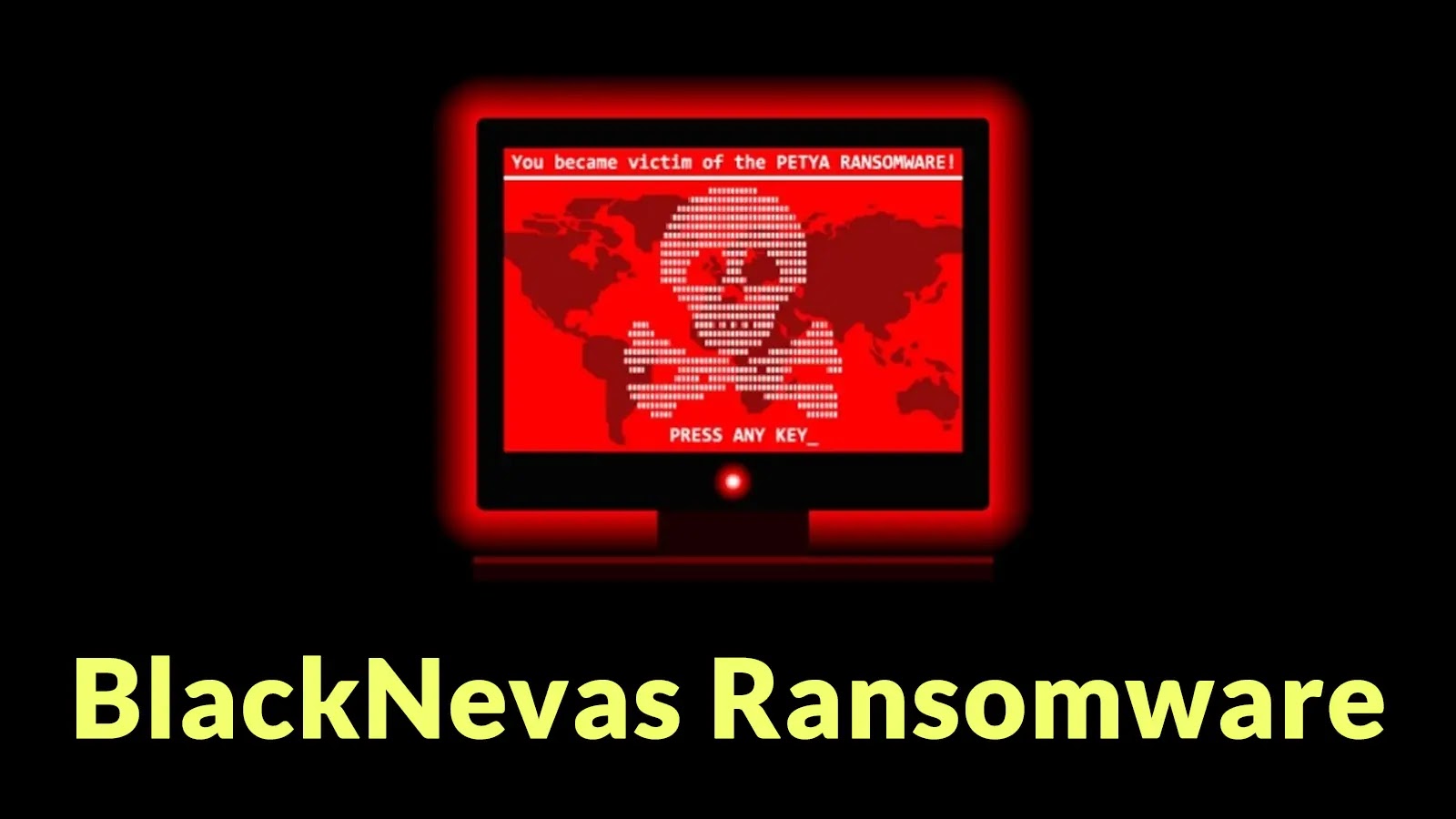
BlackNevas Ransomware Encrypts Files and Steals Sensitive Data From Affected Companies
BlackNevas Ransomware: A Dual Threat to Global Enterprises
The cybersecurity landscape faces a persistent and evolving challenge from sophisticated ransomware operations. Prominent among these is the BlackNevas ransomware group, which has rapidly established itself as a significant threat since November 2024. This aggressive cybercriminal entity employs a dangerous combination of file encryption and data exfiltration, consistently targeting businesses and critical infrastructure across Asia, North America, and Europe. Understanding the modus operandi of BlackNevas is crucial for organizations looking to defend their digital assets and sensitive information.
Understanding the BlackNevas Ransomware Threat
BlackNevas distinguishes itself through its dual-extortion tactics. Unlike traditional ransomware that solely focuses on encrypting data and demanding a ransom for its decryption key, BlackNevas first exfiltrates sensitive data from compromised networks. This stolen information is then used as leverage, with the group threatening to leak it publicly if their ransom demands are not met within a strict seven-day deadline. This strategy significantly increases the pressure on victims, as failing to pay not only means data loss but also potential regulatory fines, reputational damage, and competitive disadvantage due to the exposure of proprietary information.
The rapid emergence and widespread attack campaigns of BlackNevas underscore a growing trend in cybercrime: the professionalization and industrialization of ransomware operations. These groups often operate with a high degree of organization, leveraging advanced persistent threat (APT) techniques to gain initial access, move laterally within networks, and execute their malicious payloads. The geographical breadth of BlackNevas’s attacks, spanning three continents, highlights its global reach and ambitious targeting.
Tactics, Techniques, and Procedures (TTPs)
While specific TTPs for BlackNevas are still being fully documented by threat intelligence firms, based on the observed outcomes, we can infer several common strategies employed by such sophisticated ransomware groups:
- Initial Access: Likely through phishing campaigns targeting employees, exploitation of unpatched vulnerabilities in public-facing applications, or compromised remote desktop protocol (RDP) instances.
- Lateral Movement: Utilization of tools like PsExec, PowerShell, and RDP to spread across the network, elevate privileges, and identify valuable data for exfiltration.
- Data Exfiltration: Sensitive data, including personally identifiable information (PII), financial records, intellectual property, and other confidential business documents, are siphoned off to attacker-controlled servers.
- Encryption: Once data is exfiltrated, files on compromised systems are encrypted using strong cryptographic algorithms, rendering them inaccessible without a decryption key.
- Double Extortion: The threat of public data leakage serves as the primary leverage, intensifying the pressure on victims to pay the ransom.
Organizations must be vigilant in patching known vulnerabilities. While no specific CVEs have been publicly linked to BlackNevas’s initial access vectors at this time, it’s crucial to regularly review and remediate vulnerabilities identified in common enterprise software and operating systems. For example, staying updated on critical vulnerabilities such as those affecting CVE-2023-35618 (a Windows privilege escalation flaw) or similar internet-facing software exploits can significantly reduce attack surfaces.
Remediation Actions and Proactive Defense
Defending against advanced ransomware threats like BlackNevas requires a multi-layered and proactive cybersecurity strategy. Organizations cannot afford to be complacent.
- Robust Backup Strategy: Implement and regularly test 3-2-1 backup rules (three copies of data, on two different media, one offsite). Ensure backups are isolated and immutable to prevent ransomware from encrypting them.
- Endpoint Detection and Response (EDR)/Extended Detection and Response (XDR): Deploy advanced EDR/XDR solutions to monitor endpoints and networks for suspicious activity, detect anomalous behavior indicative of ransomware, and enable rapid response.
- Network Segmentation: Segment networks to limit lateral movement. If one part of the network is compromised, the impact can be contained to that segment, preventing the ransomware from spreading throughout the entire enterprise.
- Vulnerability Management and Patching: Regularly scan for vulnerabilities and apply patches promptly. Pay particular attention to internet-facing systems and critical infrastructure components.
- Security Awareness Training: Educate employees on phishing scams, social engineering tactics, and the importance of strong password hygiene. Many ransomware attacks begin with human error.
- Principle of Least Privilege: Grant users and applications only the minimum necessary permissions to perform their functions. This limits an attacker’s ability to escalate privileges and move through the network.
- Multi-Factor Authentication (MFA): Implement MFA across all services, especially for remote access, VPNs, and privileged accounts. This significantly reduces the risk of credential compromise.
- Incident Response Plan: Develop and regularly drill an incident response plan specifically for ransomware attacks. This plan should detail communication strategies, containment procedures, eradication steps, and recovery protocols.
Conclusion
The BlackNevas ransomware group represents a formidable and evolving threat that marries data encryption with the severe repercussions of public data exposure. Its global reach and sophisticated tactics demand a rigorous and adaptive cybersecurity posture from organizations worldwide. By understanding the threat, implementing robust security controls, and fostering a culture of cybersecurity awareness, businesses can significantly reduce their vulnerability to BlackNevas and similar dual-extortion ransomware operations. Proactive defense, continuous monitoring, and a well-rehearsed incident response plan are no longer optional, but essential components of modern enterprise resilience. Organizations must prioritize these measures to protect their sensitive data, maintain operational continuity, and safeguard their reputation in an increasingly hostile digital environment.





